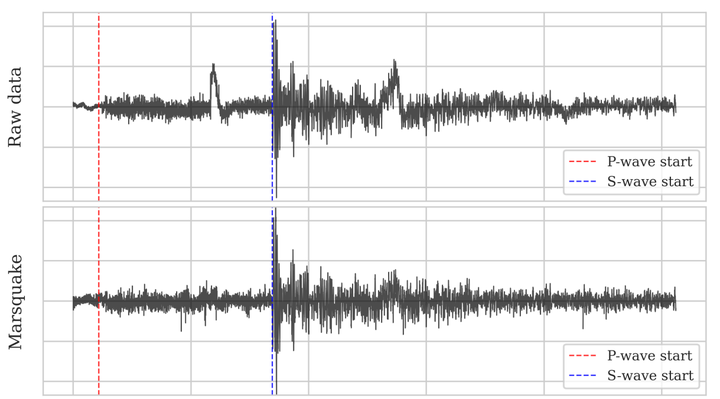 Cleaned marsquake
Cleaned marsquake
Abstract
Source separation entails the ill-posed problem of retrieving a set of source signals observed through a mixing operator. Solving this problem requires prior knowledge, which is commonly incorporated by imposing regularity conditions on the source signals or implicitly learned in supervised or unsupervised methods from existing data. While data-driven methods have shown great promise in source separation, they are often dependent on large amounts of data, which rarely exists in planetary space missions. Considering this challenge, we propose an unsupervised source separation scheme for domains with limited data access that involves solving an optimization problem in the wavelet scattering representation space—an interpretable low-dimensional representation of stationary processes. We present a real-data example in which we remove transient thermally induced microtilts, known as glitches, from data recorded by a seismometer during NASA s InSight mission on Mars. Owing to the wavelet scattering covariances ability to capture non-Gaussian properties of stochastic processes, we are able to separate glitches using only a few glitch-free data snippets.